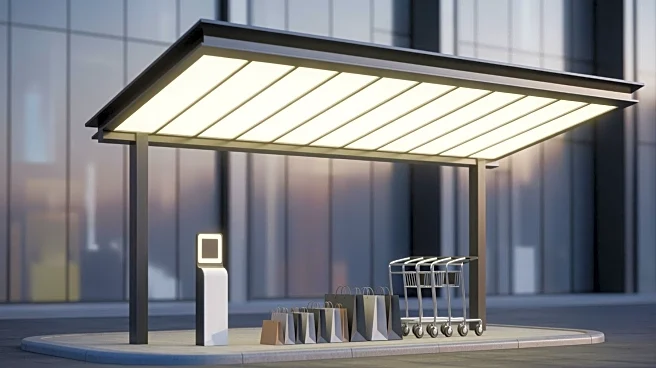What's Happening?
Buc-ee’s has been named the top U.S. quick-service restaurant (QSR) in the Retailer Preference Index (RPI) QSR Edition by customer data science firm dunnhumby. The study evaluates the $250 billion U.S. QSR market,
assessing 58 brands, including seven convenience stores. Buc-ee’s, along with Kwik Trip, In-N-Out Burger, Raising Cane’s, and Chick-fil-A, leads the rankings. The report highlights the growing trend of convenience stores being seen as viable meal destinations, with five of the top 14 spots occupied by such stores. This shift underscores the importance of understanding consumer preferences and adapting to meet their expectations.
Why It's Important?
The recognition of Buc-ee’s and other convenience stores in the QSR rankings signifies a shift in consumer behavior, where convenience stores are increasingly viewed as legitimate meal destinations. This trend could impact traditional QSR chains, prompting them to reassess their strategies to maintain competitiveness. The study reveals that top-performing brands grow significantly faster, with higher customer trust and emotional connection. This evolution in consumer preferences could lead to increased investment in convenience store offerings and a reevaluation of service models by traditional QSRs.
What's Next?
As convenience stores continue to gain traction in the QSR market, traditional fast-food chains may need to innovate and adapt to changing consumer demands. This could involve enhancing product quality, visibility, and convenience to compete effectively. Brands that excel in multiple key areas, such as quality experiences and affordability, are likely to thrive. The ongoing blurring of lines between QSRs and convenience stores may lead to strategic partnerships or acquisitions, as companies seek to leverage the strengths of both models.
Beyond the Headlines
The rise of convenience stores in the QSR rankings may have broader implications for urban planning and retail strategies. As these stores become more popular meal destinations, there could be increased demand for locations in high-traffic areas, impacting real estate and development trends. Additionally, the focus on customer experience and emotional connection may drive innovations in store design and marketing strategies, influencing the overall retail landscape.











